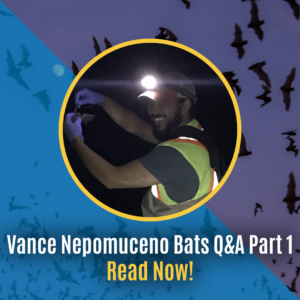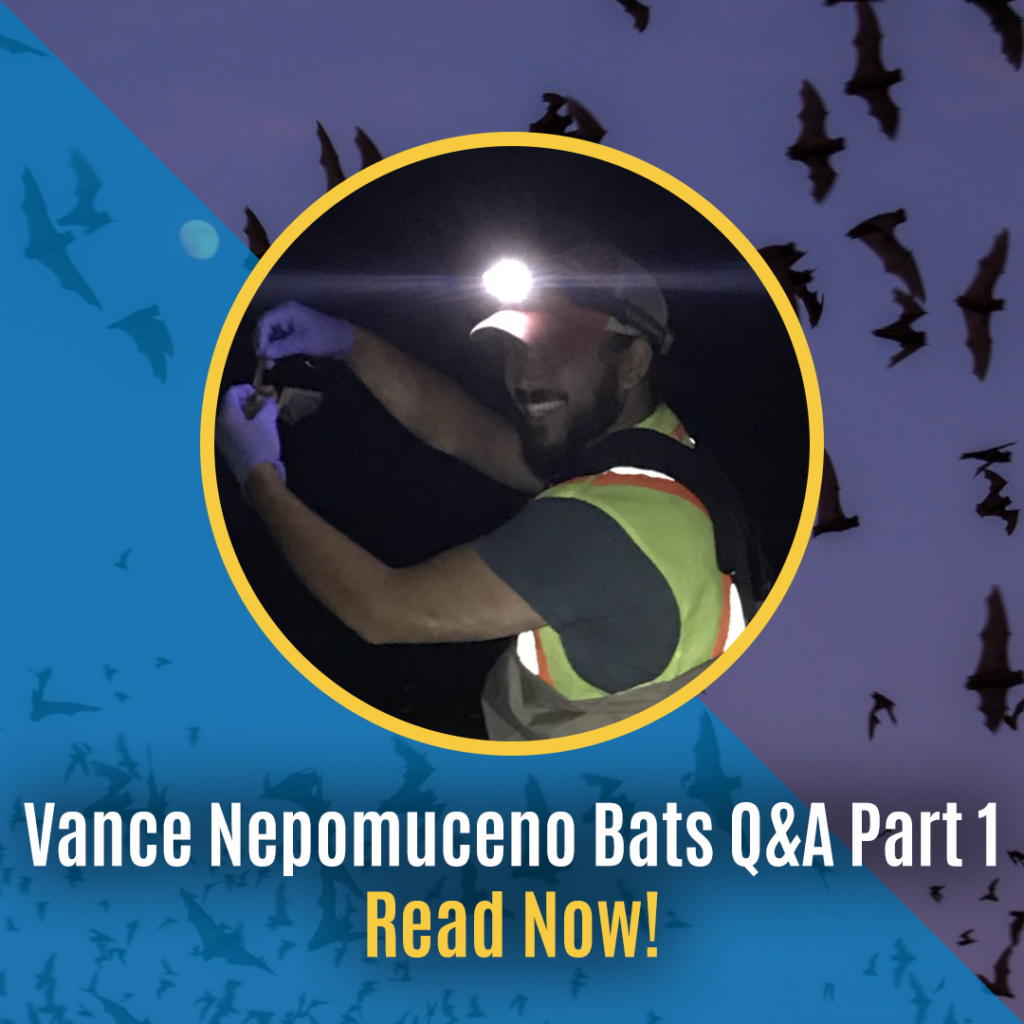
At ECS, we constantly evolve and move toward the future and new capabilities in our industry. We sat with Vance Nepomuceno, Project Manager and Wildlife Biologist with our Environmental group in our Richmond, VA office to learn more about him, the Endangered Species Act, bat surveys and the best time to complete them.
Q: What do you like to do when you are not working?
A: Outdoor activities, such as hiking, fishing, and disc golf. Indoor activities include board games.
Q: What is a fun fact about you that many people may not know?
A: It has been a while since I calculated the amount, but I have won over $1,500 at various bar trivia nights in my lifetime.
Q: Tell us a little about your professional background and expertise in bats and wildlife sciences.
A: I graduated from the College of Natural Resources and the Environment at Virginia Tech, earning a bachelor’s in Wildlife Science with a minor in Forestry. I am presently completing my master’s at Virginia Tech in Wildlife and Fisheries Conservation as well. I have held various jobs on species conservation, ranging from jaguars in Belize to bats, mussels and bog turtles in the U.S.
Q: Tell us about the Endangered Species Act and how that affects a project in development.
A: The Endangered Species Act (ESA) is a federal law in the United States enacted in 1973 to protect and conserve endangered and threatened species and their habitats. Under this law, species are listed as endangered or threatened and measures are taken to protect them from harm or extinction.
A species listed as endangered or threatened triggers a series of legal obligations that affect project development. The ESA prohibits the “take” of listed species, which means any action that harms, harasses, or kills an individual member of that species. Project developers must ensure their activities do not harm listed species or habitats.
If a proposed project is likely to impact a listed species, the developer must obtain a permit from the U.S. Fish and Wildlife Service or the National Marine Fisheries Service. The permit process can be lengthy and may require the developer to modify the project design to minimize harm to the species. In some cases, the permit may be denied if the project poses an unacceptable risk to the species or its habitat.
Overall, the ESA plays a significant role in regulating project development in areas where endangered or threatened species are present. It helps to ensure that the needs of wildlife are balanced with human activities and development requirements.
Q: What are bat surveys and why are they important?
A: Bat surveys are essential for several reasons. First and foremost, bat surveys can be required by regulatory agencies in order for a project to be authorized under the Endangered Species Act. If suitable bat habitat exists within a project’s footprint and clearing of that habitat is proposed to be done for the project, regulators may require a survey be done to ensure that the bats are not using the habitat proposed for clearing. Surveys can be acoustic in nature, where microphones record bat calls for a certain number of nights in order to identify the species present, or mist net surveys, where individual bats are captured and identified on a property. The specific type of survey required or recommended depends on several variables including the project schedule, size, and cost, but both types can be used to help achieve regulatory clearance.
Q: Is there a specific time of year that is best to perform these surveys, or can they be performed year-round?
A: Presence/probable absence surveys can only be done during the height of the ‘active season’ for bats; for most regions the survey season is from May 15th to August 15th. This is extremely important for projects wishing to clear trees during the summer months because if this survey window is missed, it would require waiting until the next survey season opens or requesting approval from the regulator to clear outside of the bat’s active season, which would limit clearing to between November 15th and March 31st, something that is not always possible for a specific project.
Stay tuned for part two of this series on bats with Vance Nepomuceno, there is more to know and more to learn about this great species and how the new rules could impact projects.
Update: Click Here to read Pt. 2

